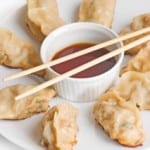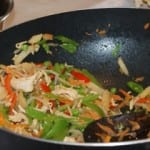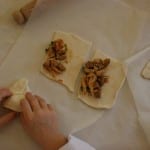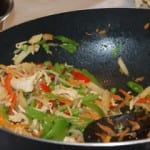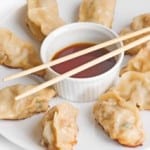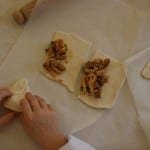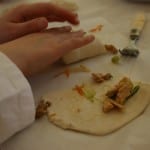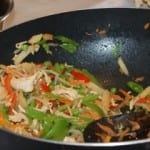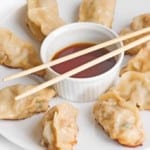Chinese food is full of flavour and colour and is much healthier than the versions we regularly sample in classic take aways. Lots of brightly coloured stir fried vegetables, lean chicken, steamed fish, flavoured with soy sauce, ginger, citrus fruits and a little rice wine and served with steamed rice or noodles. With a trusty wok it will take 10 minutes to cook a delicious family meal, encourage all the family to get involved with preparing it and it will be even quicker. Try some of my recipes out and let me know what you think.
Chinese New Year
Chinese New Year falls between the end of January and the middle of February each year. The exact date is dependent on the lunar cycle and the solar year not the Gregorian calendar used in Europe. This year it starts on 23 January – the second new moon after the Winter Solstice and finishes 15 days later when the moon is full.
New Year’s Eve and New Year’s Day is celebrated as a family gathering starting with a family supper on New Year’s Eve, a little like our Christmas Day lunch. Next morning the children will wish their parents a ‘healthy and happy New Year’ and are usually given money in red envelopes. It is tradition to clean the house thoroughly to ‘sweep’ away any bad luck and make sure that the house is clean to welcome in good luck for the New Year. This is also a time to heal grudges and forgive any arguments from the past year and to start anew.
Myths around Chinese New Year
Legends tell of a fight against a mythical beast called the Nian. This creature would terrorise villagers and devour livestock, crops and people on the first day of the New Year. To try and protect themselves the villagers would leave food out on their doorsteps believing that if the Nian was given food it would stop attacking the livestock and people. One day, one of the villagers saw the Nian run away from a small child who was wearing red. They assumed that the creature was scared of the colour red and began decorating their doors and windows with red lanterns and scrolls and setting off firecrackers to scare the Nian away. The Nian never came back to the village again and to this day the colour red is used to decorate Chinese homes and businesses at New Year.
Food Traditions
Each day of the New Year celebrations hold an specific significance and some of these traditions focus on food:
New Year’s Eve – a whole chicken symbolises family togetherness. Noodles represent a long life and it’s supposed to bring bad luck to cut noodles so they are sometimes served very, very long. Spring rolls symbolise wealth as they are the shape of a gold bar.
First day – the day for visiting grandparents and great grandparents – the most senior members of the family, fireworks are set off and children are given money in red envelopes. Many people do not eat meat on this day and some think it is inauspicious to light fires or use knives on New Year’s Day.
Fifth Day – the birthday of god of wealth, dumplings are traditionally eaten (see recipe).
Seventh Day – a tossed raw fish salad is traditionally eaten together, tossed by each person in turn who makes a wish.
Thirteenth Day – only vegetarian food is eaten as a sort of detox as too much food has usually been eaten in the previous days.
Fifteenth Day – the last day of the New Year celebrations is the Lantern Festival, sweet rice dumplings are made symbolising a rich, sweet life and the round shape signifies reunion.
Tangerines and oranges are very popular as the words sound like ‘luck’ and ‘wealth’, the Chinese word for pomelo sounds like ‘to have’ and the word for fish sounds like the words for ‘wish’ and ‘abundance’.

